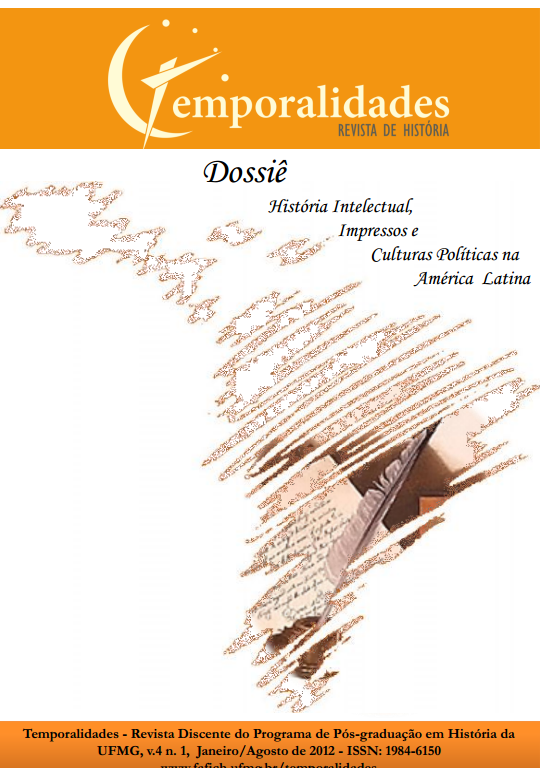As representações sociais sobre as mulheres na revista Careta (1910 – 1920): entre a mulher ideal e a independente
Palabras clave:
História, Imprensa, Relações de gêneroResumen
O início do século XX foi marcado por diversas transformações urbanísticas. A
cidade do Rio de Janeiro tinha sido modernizada seguindo os modelos arquitetônicos europeus; junto dessas transformações, ocorreu também a tentativa de mudanças comportamentais, pois algumas camadas mais abastadas pretendiam que a sociedade brasileira se tornasse “civilizada”, tal como a europeia. Essas transformações são evidenciadas nas páginas da revista de variedades denominada Careta, entre 1910 e 1920. Neste estudo, analisamos as representações sociais acerca do feminino , presentes nesta revista de circulação nacional, para o estabelecimento de um tipo ideal de mulher. A mulher moderna ideal era aquela que usufruía dos es paços públicos, mas que não contestava as hierarquias sociais existentes. Em contraposição, encontramos na revista outra
representação social atribuída à mulher. Esta mulher era independente, questionava as hierarquias existentes, “a frente do seu tempo” na forma de vestir e de agir. Todavia, esta mulher independente deveria ser combatida, pois não aceitava o papel de mãe e esposa.
ABSTRACT: The beggining of the 20th century was marked by many urban transformations. The city of Rio de Janeiro had been upgraded following european architectonic models; with this transformations, also happened the attempt of comportamental changes, because some of the richer levels of society intended that the brazilian society became civilized, just like, the european. This transformations are well notice in the pages of the diversity magazine called Careta between 1910 and 1920. In this study were analized the socials representations among the female in this magazine of national impression for the establishment of the role model of woman. The ideal
modern woman was the one that went to public spaces, but didn't have an objection of the social hierarchy of the time. However, in the magazine, we find another social representation to the woman. This woman was independent, criticized the hierarchy of the time, "foward of her time" in the way of dressing and actions. But, this independent woman should be banished, because she didn't accept the role of mother and wife.
KEYWORDS: History, Press, Gender.
Descargas
Descargas
Publicado
Número
Sección
Licencia
O(A) autor(a), para fins de submissão à revista Temporalidades, deve declarar que o trabalho aqui submetido é de autoria do mesmo e nunca foi publicado em qualquer meio, seja ele impresso ou digital.
O(A) autor(a) também declara estar ciente das seguintes questões:
Os direitos autorais para artigos publicados na Temporalidades são do autor, com direitos de primeira publicação para o periódico;
Em virtude de aparecerem nesta revista de acesso público, os artigos são de uso gratuito;
A revista permitirá o uso dos trabalhos publicados para fins não-comerciais, incluindo direito de enviar o trabalho para bases de dados de acesso público.
A Temporalidades adota a licença internacional Creative Commons 4.0 (CC BY).







